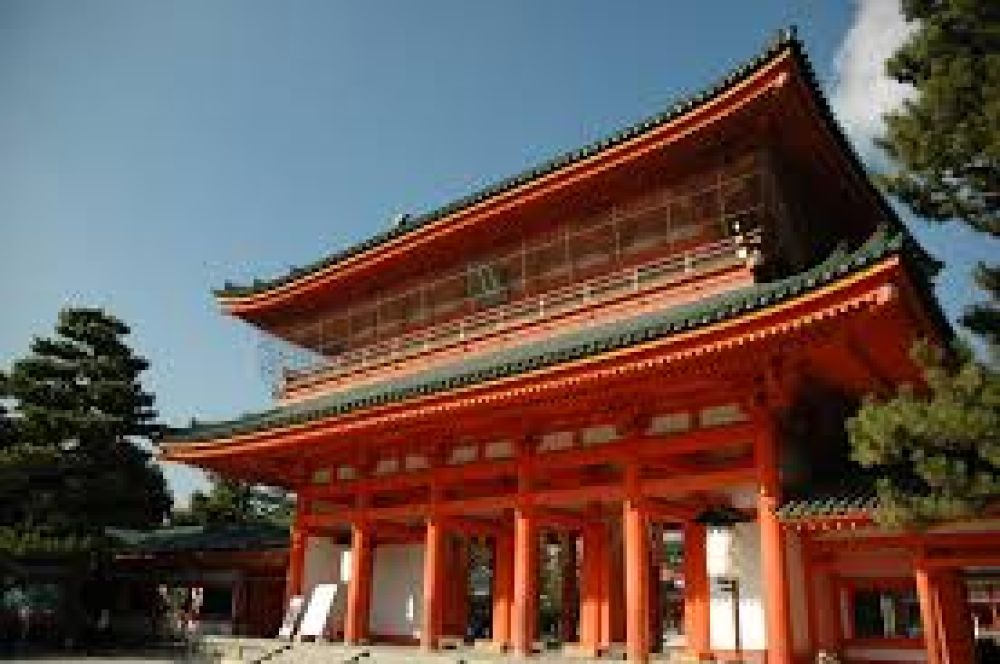

Heian Shrine, located in the heart of Kyoto, is one of the city's most important Shinto shrines and a popular tourist destination. The shrine was established in 1895, marking the 1100th anniversary of the founding of Kyoto, which was then known as Heian-kyō, the capital of Japan. The shrine is dedicated to the spirits of the first and last emperors who reigned from the city, Emperor Kammu and Emperor Komei. Its architecture is styled after the ancient Imperial Palace from the Heian Period, making it a symbol of the city's historical significance and a physical manifestation of Kyoto's rich cultural heritage.
Tourism to Heian Shrine began shortly after its establishment, as the site quickly gained importance among both local residents and visitors from afar. The cultural significance of the shrine, along with its scenic beauty, attracted those interested in the ancient customs and traditions of Japan. The early 20th century saw increased accessibility to the city of Kyoto, further boosting the shrine's popularity.
After World War II, with the rapid reconstruction of Japan and the rise of global tourism, Heian Shrine solidified its status as a must-visit landmark for tourists. The shrine was not only a place of worship but also became a symbol of the resilience and restoration of Japanese culture. The beauty of its gardens, particularly during cherry blossom season, continued to draw crowds, making it an iconic image in travel brochures and postcards.
In the late 20th century and into the 21st century, Heian Shrine's tourism appeal has been boosted by its inclusion in various travel publications and online platforms. It's been a popular location for cultural events and festivals which regularly take place within its precincts, including the famous Jidai Matsuri, one of Kyoto's three greatest festivals. These events have contributed to the shrine's appeal, attracting visitors not just for its historical significance but also as a vibrant center of living culture.
In recent years, sustainable tourism has become more important, with visitors to Heian Shrine and Kyoto looking to enjoy its sites in a manner that respects the local environment and culture. Additionally, experience-based tourism has grown in popularity, with tourists seeking a deeper understanding and more personal interaction with the historical and cultural elements of the shrine. Social media has also played a significant role in shaping modern tourism trends, with beautifully curated images of Heian Shrine's architecture and gardens circulating on platforms such as Instagram, enticing a new generation of travelers.
Today, Heian Shrine remains an iconic destination in Kyoto, drawing visitors for its historical significance, its spiritual ambience, and its stunning beauty. The shrine's spacious grounds offer a tranquil escape from the hustle and bustle of the city, while the grandeur of its architecture and the colors of its gardens provide a feast for the senses. Tourists can explore the shrine at their leisure or participate in one of the many cultural festivals and events that amplify the shrine's historical resonance throughout the year.
Address: Okazaki Nishitenno-cho, Sakyo-ku, Kyoto City
Access: A short walk from the City Bus Stop Kyoto Kaikan Bijutsukan-mae
Opening Hours: Varies by season, please check ahead for specific times